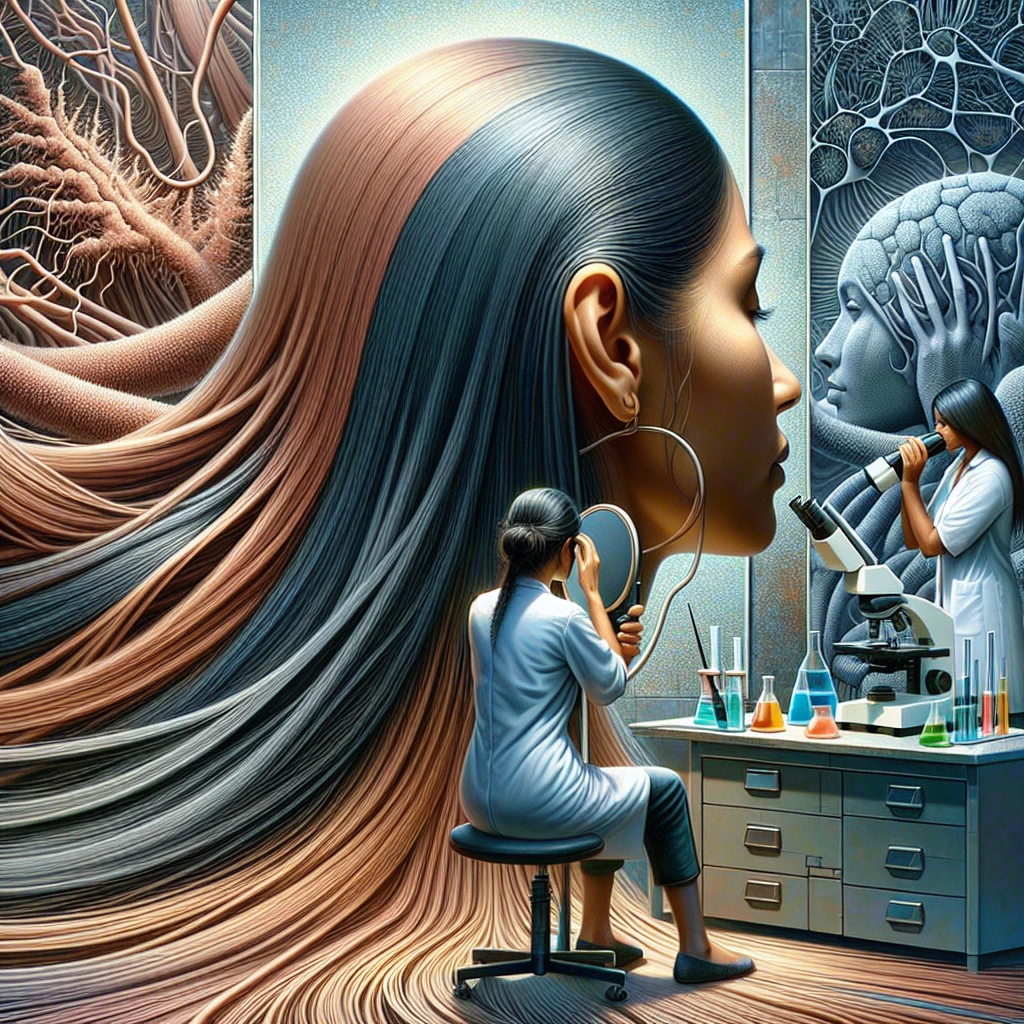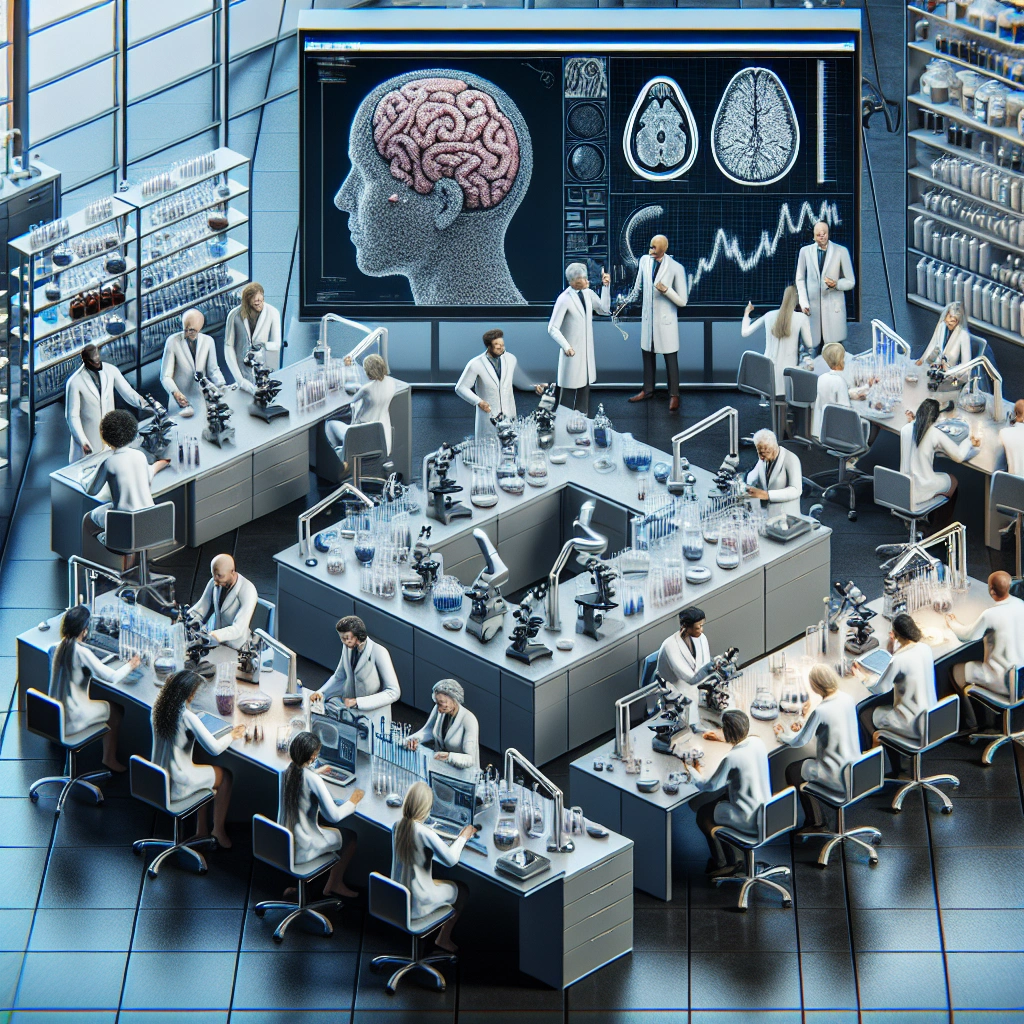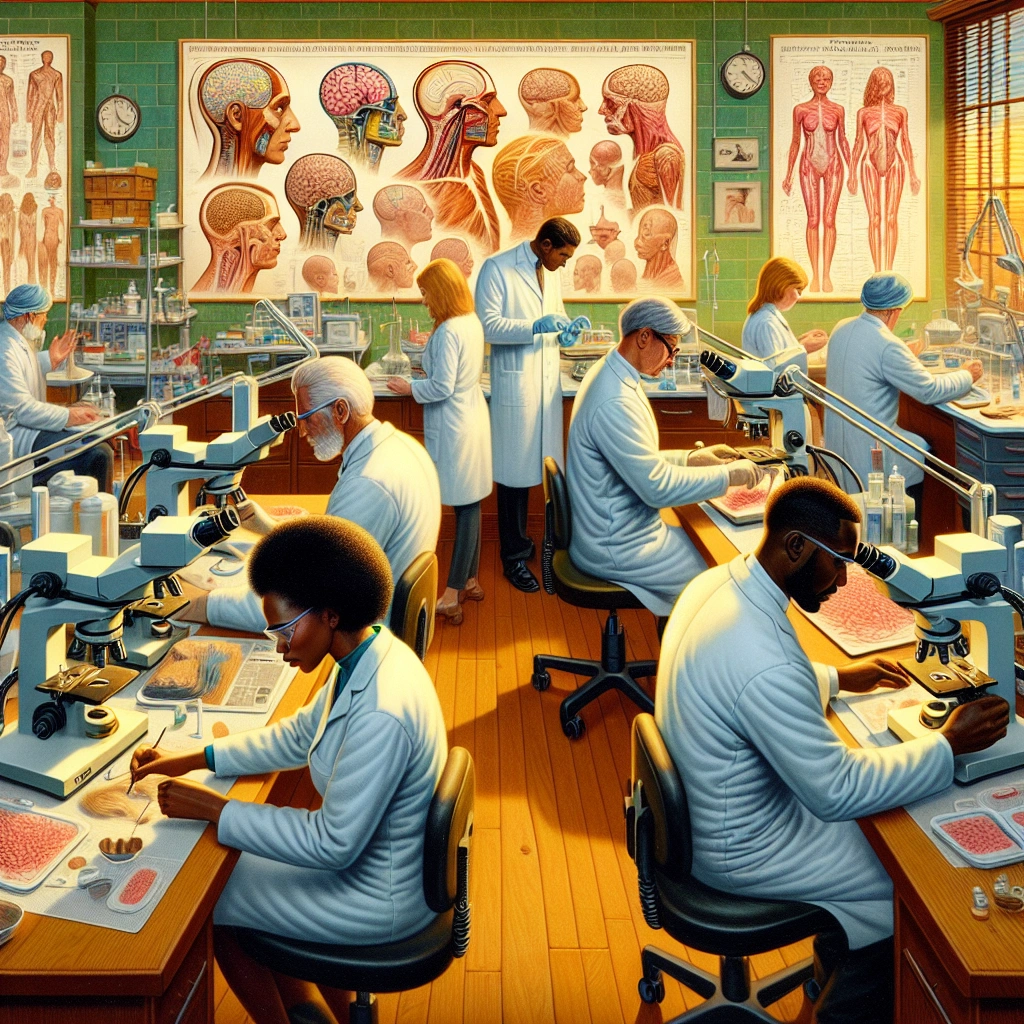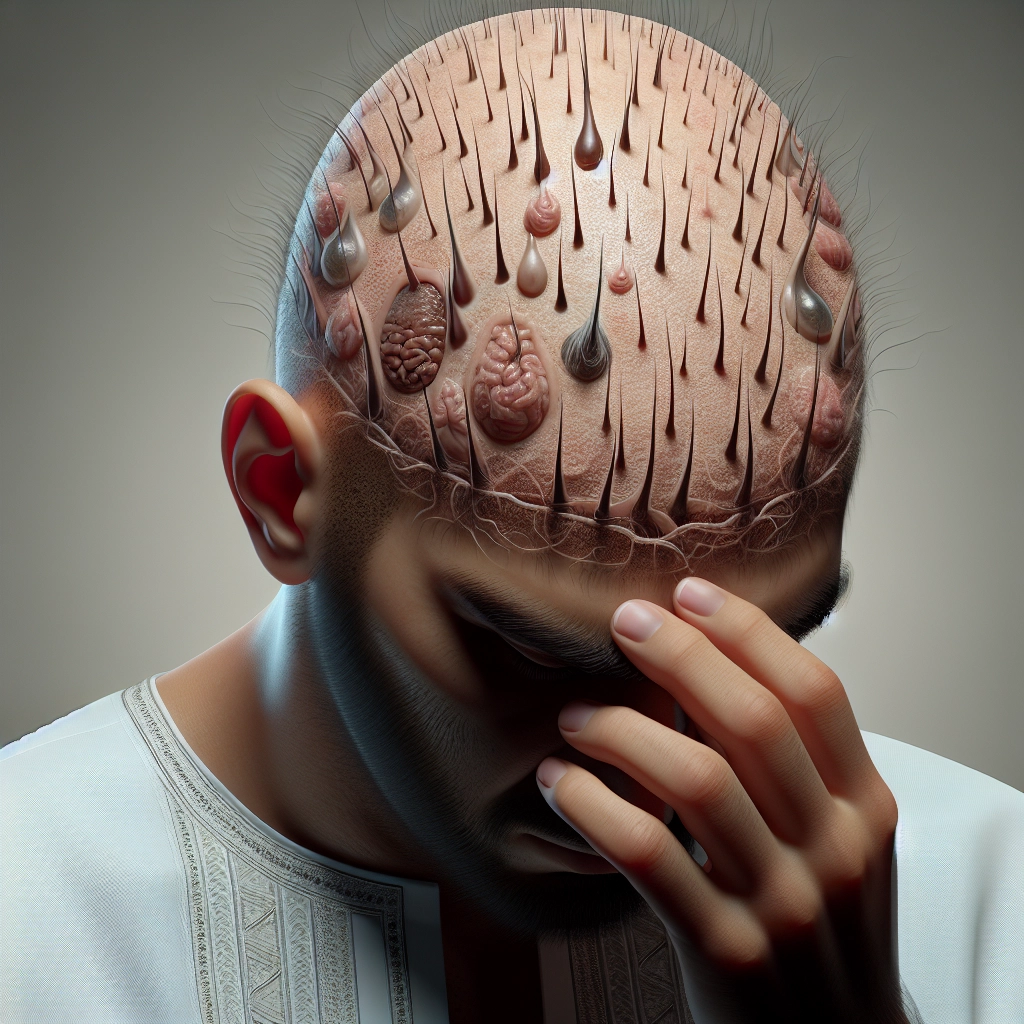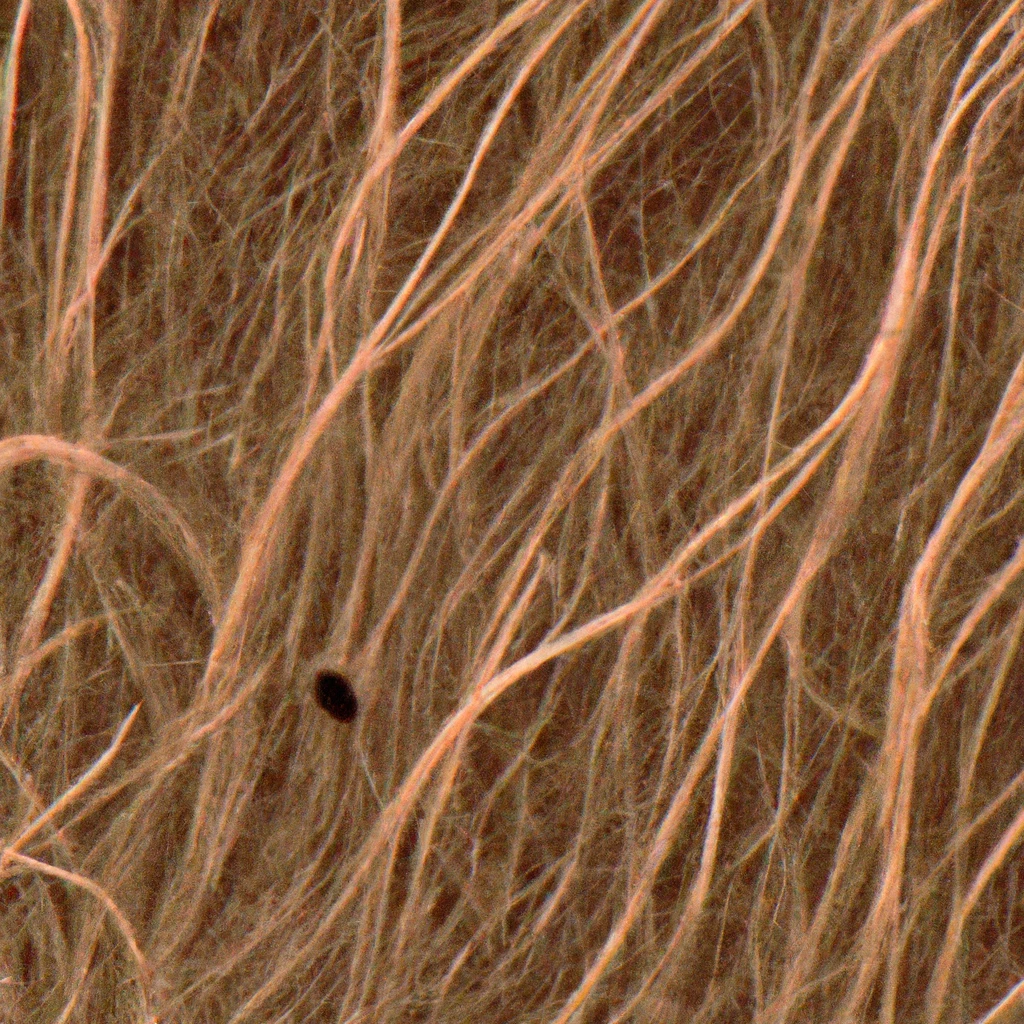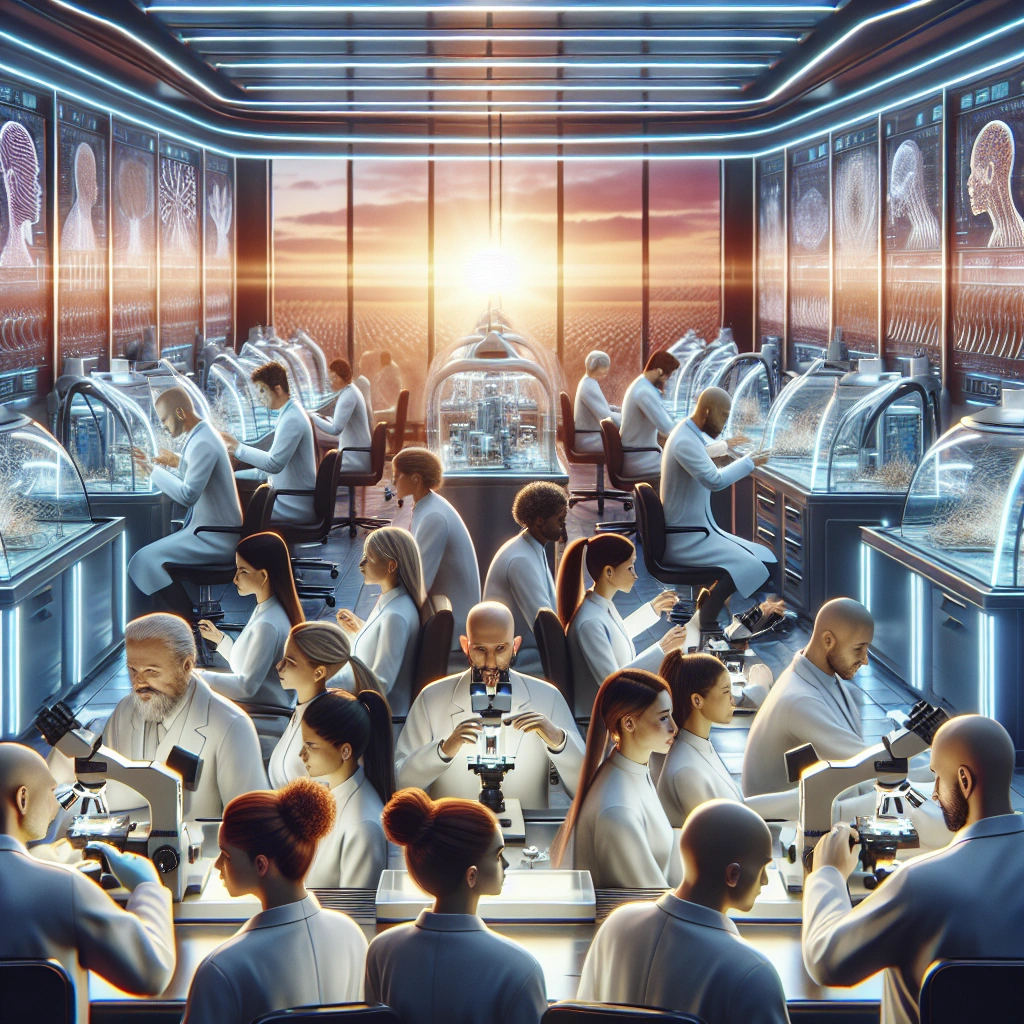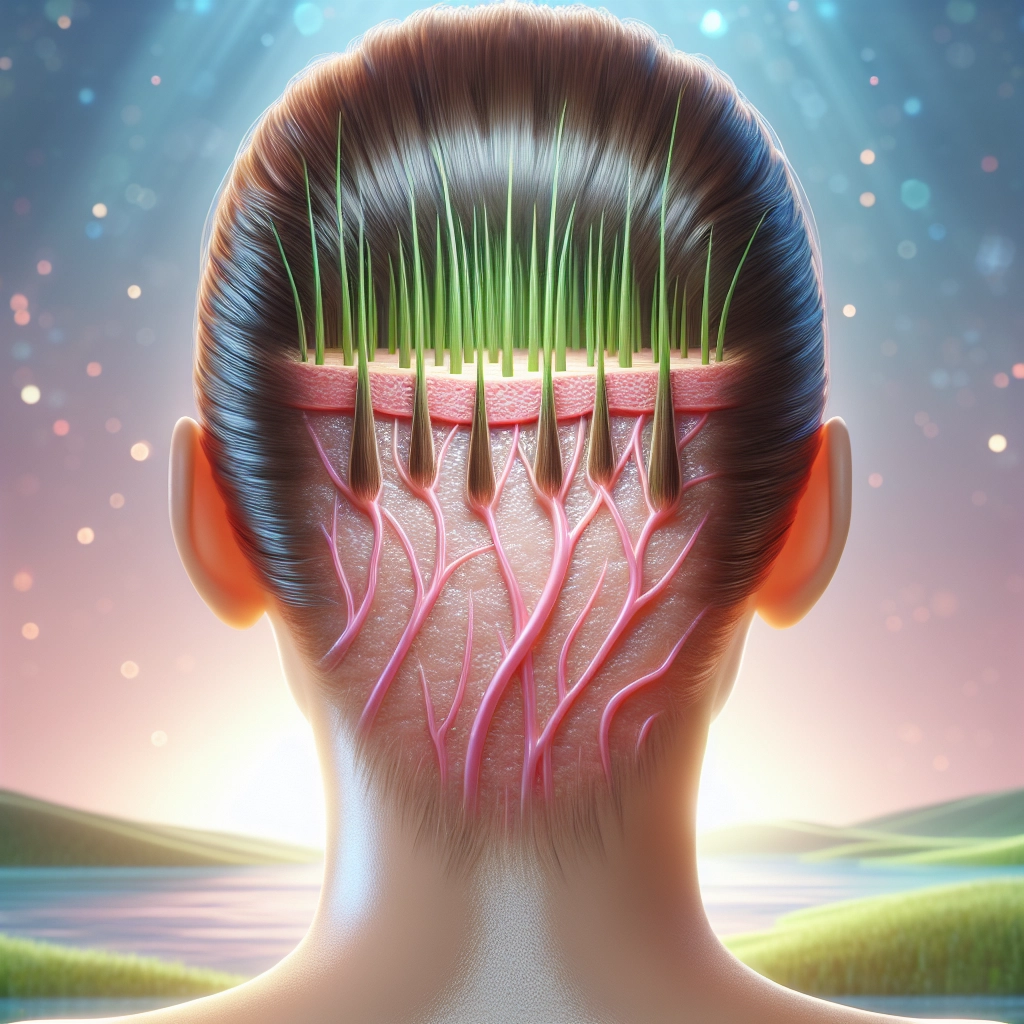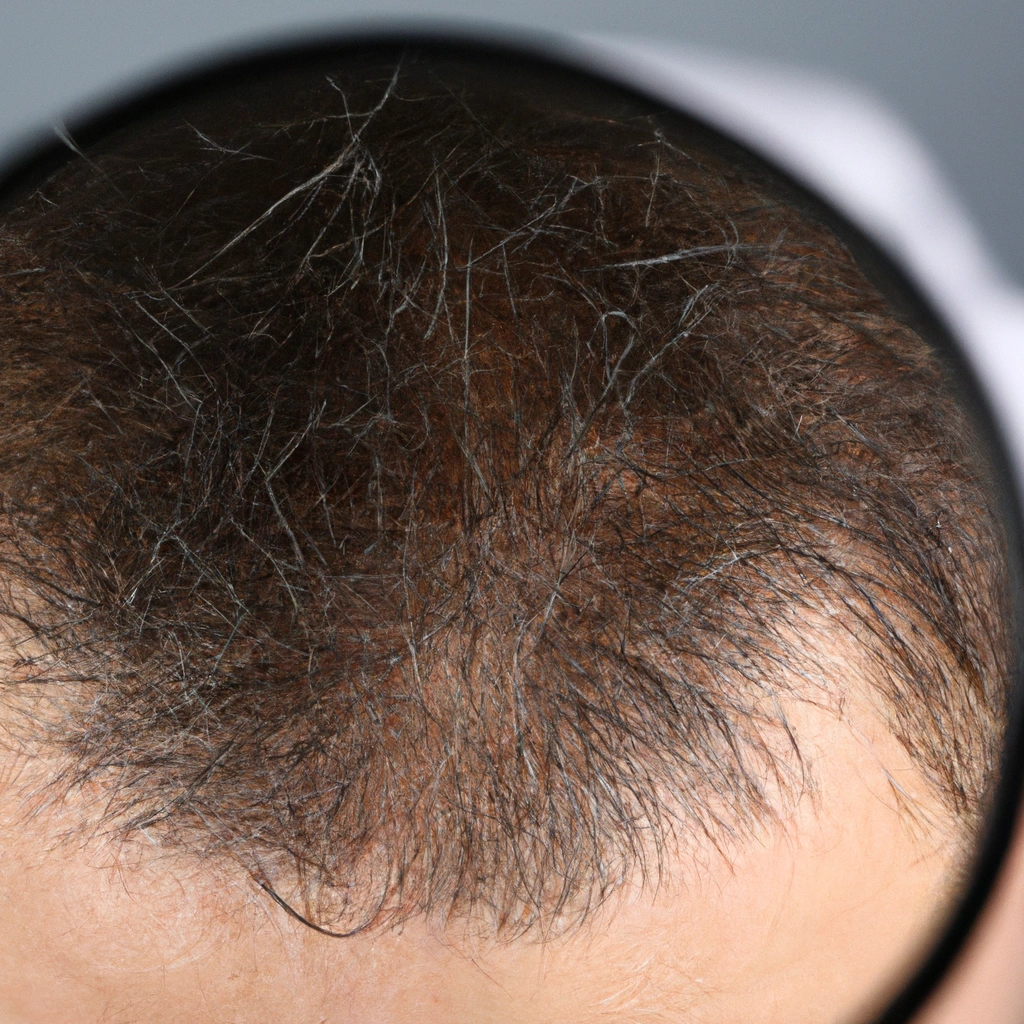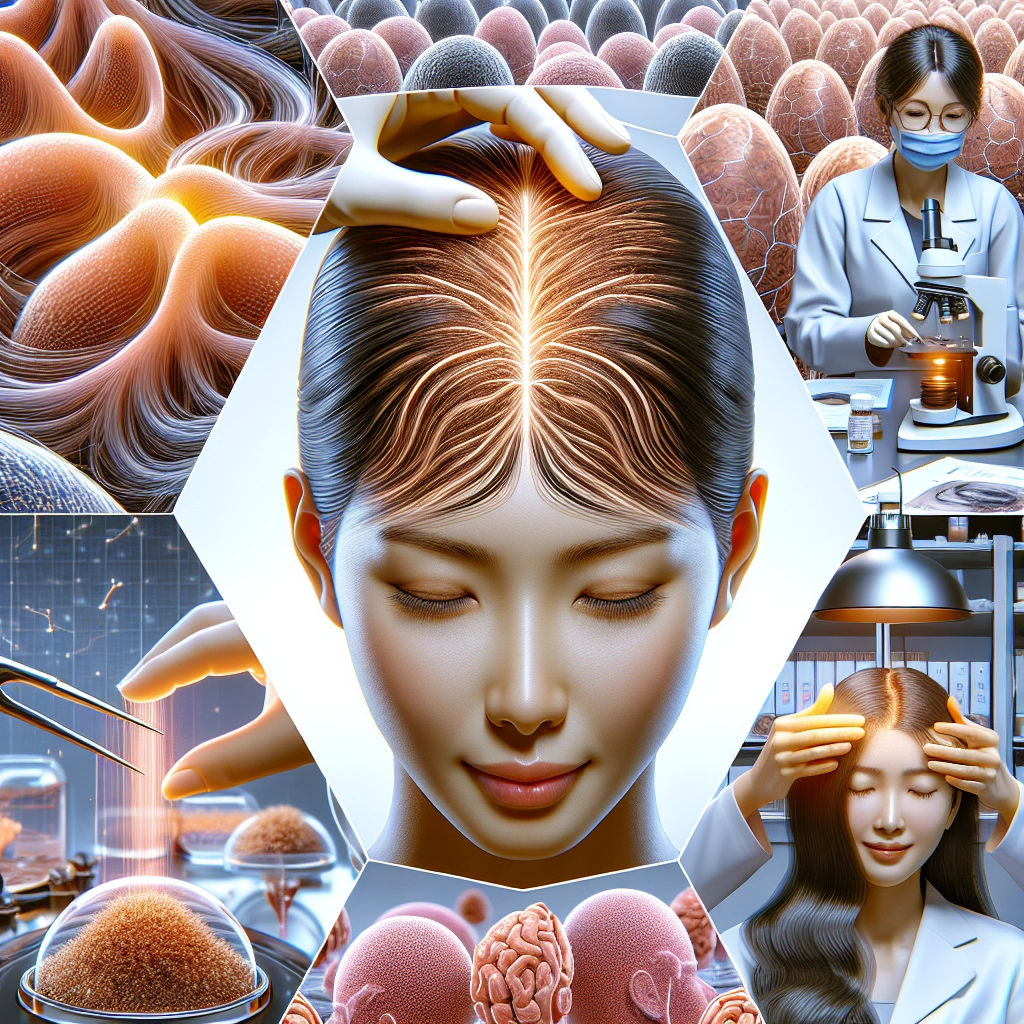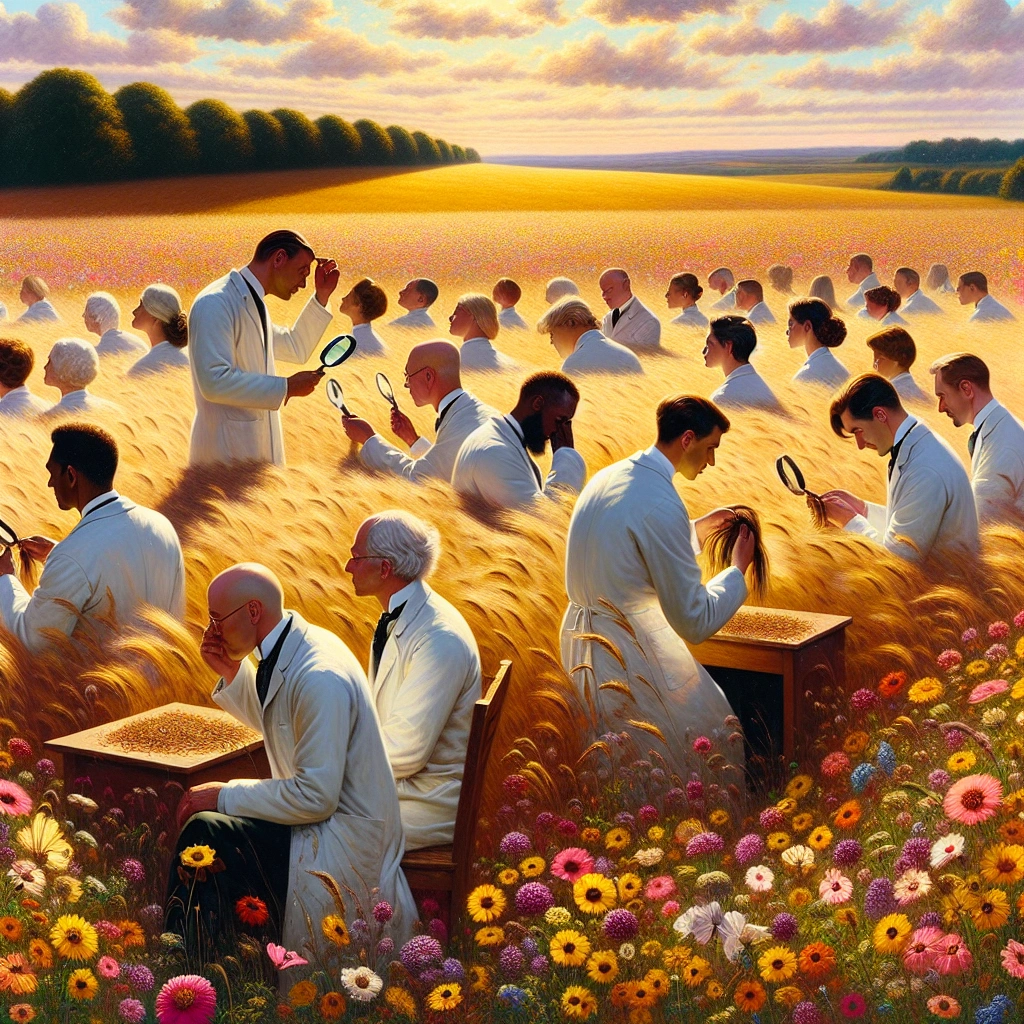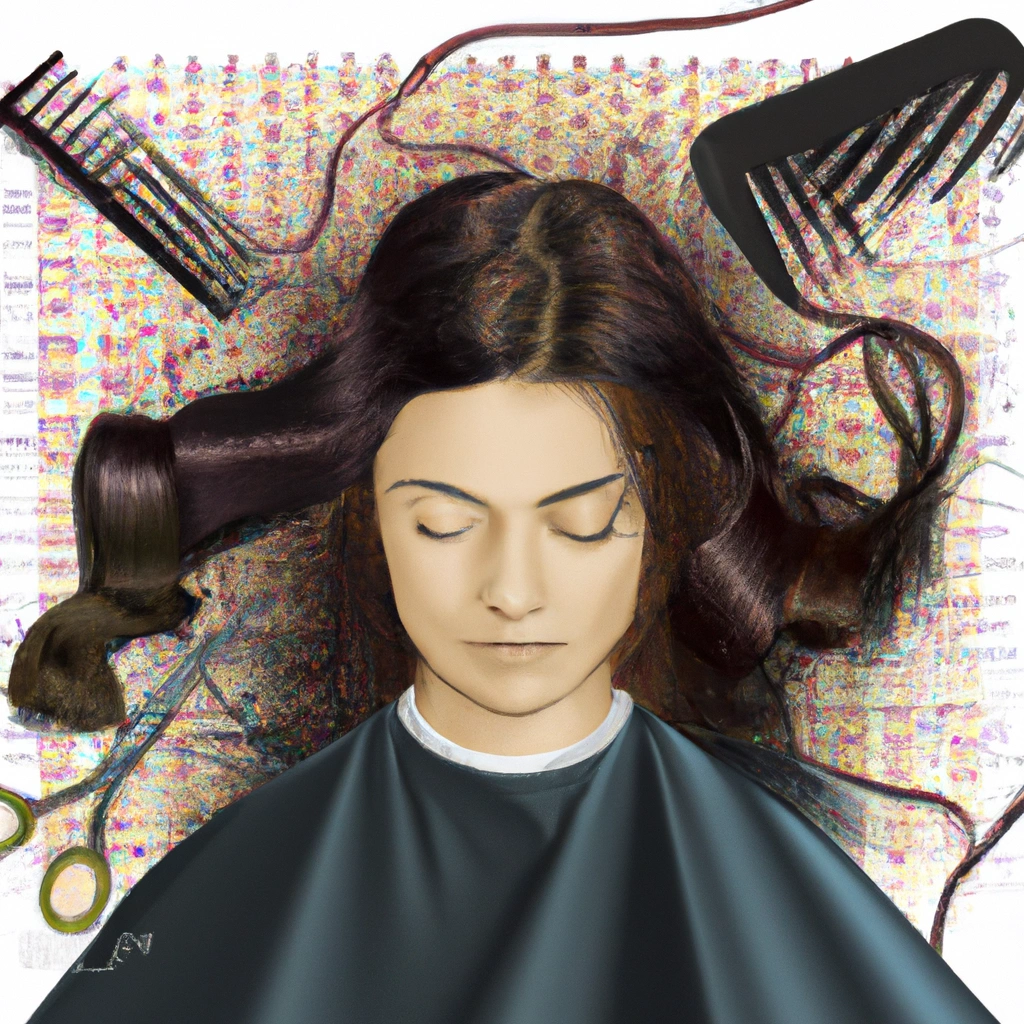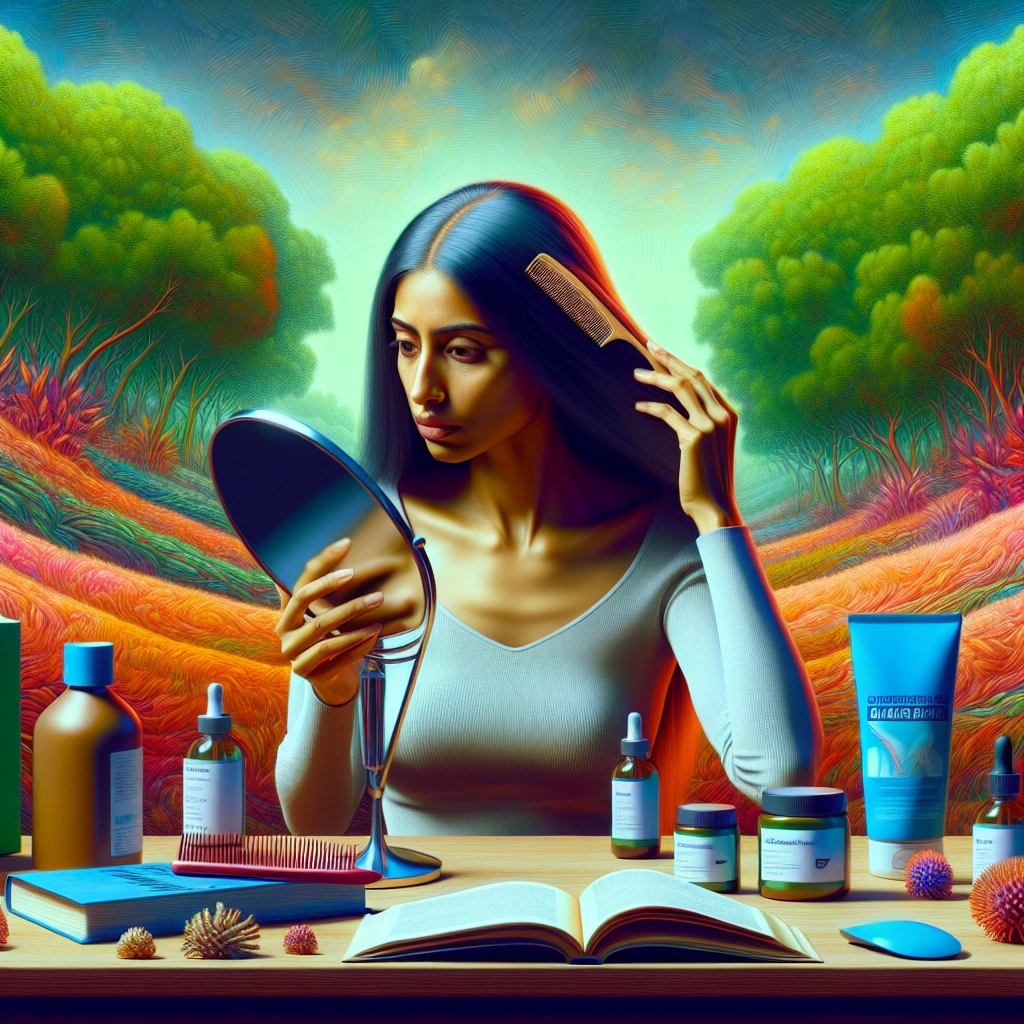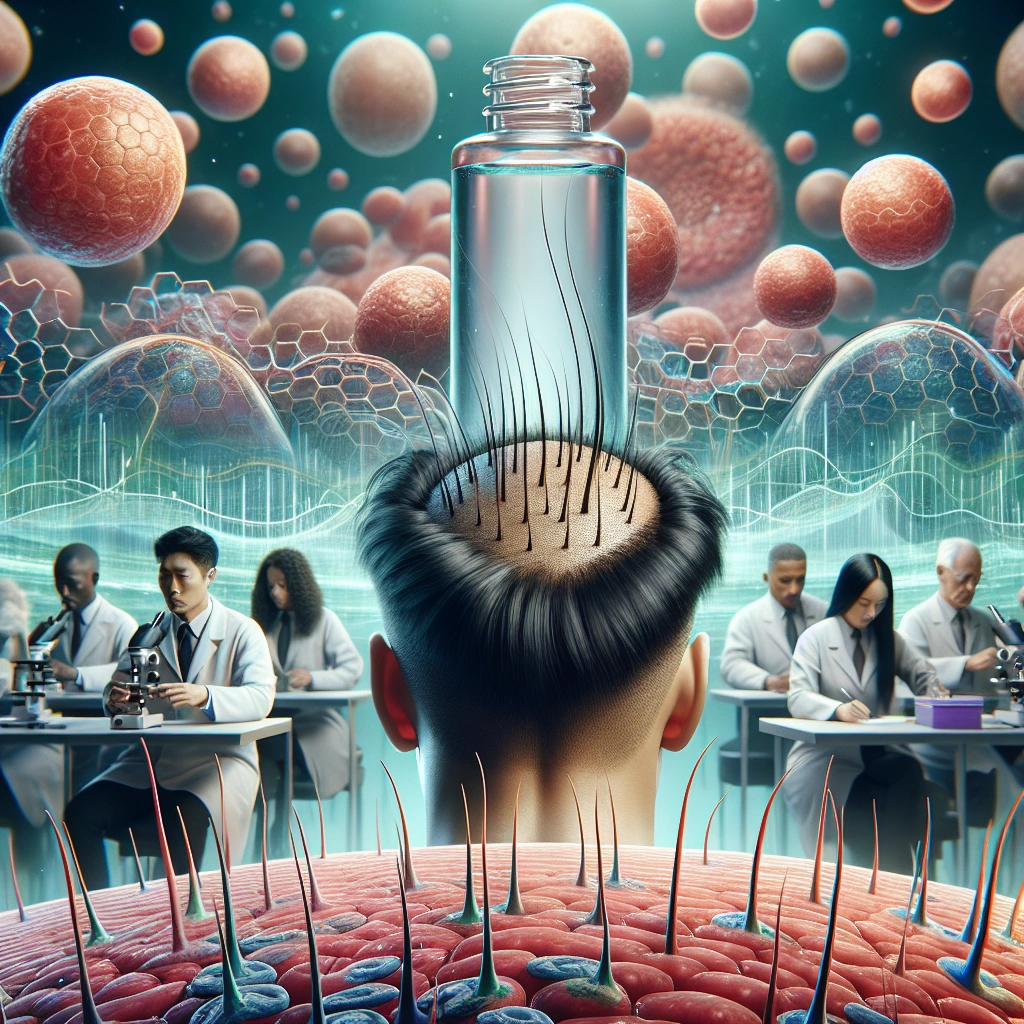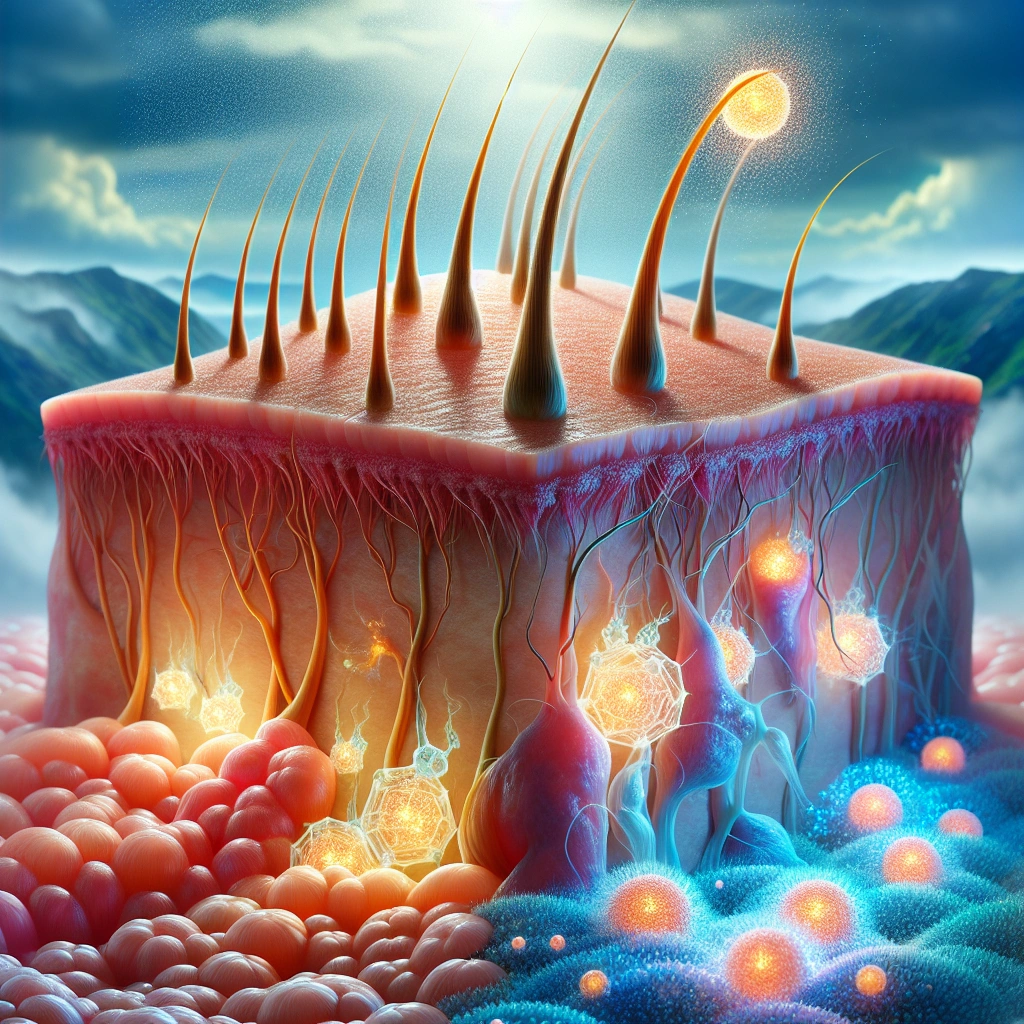

Understanding the science behind hair growth and balding people is crucial for finding effective treatments and solutions. This knowledge can help individuals make informed decisions about their hair care and seek appropriate medical interventions if needed.
In this article, we will cover the latest research on the causes of hair loss, including genetic factors, hormone imbalances, and aging. We will also explore advancements in hair growth treatments, such as medications and surgical options.
By understanding the science behind hair growth and balding, readers will gain insights into potential preventive measures and treatment strategies.
Check out this Youtube video: “The Science of Healthy Hair, Hair Loss and How to Regrow Hair,” if you want to understand the science behind hair growth and balding.
The Hair Growth Cycle
An in-depth explanation of the three phases of the hair growth cycle
The hair growth cycle consists of three distinct phases: anagen, catagen, and telogen. The anagen phase is the active growth phase where hair follicles produce new hair, while the catagen phase serves as a transitional phase between growth and rest.
Lastly, the telogen phase is the resting phase, during which hair is no longer actively growing and is most likely to shed.
How each phase contributes to hair growth and shedding
During the anagen phase, the cells in the root of the hair are rapidly dividing, resulting in the formation of new hair. Hair grows at a rate of about half an inch per month during this phase.
In contrast, the catagen phase signals the end of active growth and prepares the hair for shedding, while the telogen phase is characterized by resting hair and the shedding of old hair, making way for new hair to emerge.
| Hair Growth Cycle Phase | Description |
|---|---|
| Anagen | Active growth phase where new hair is formed |
| Catagen | Transitional phase between growth and rest |
| Telogen | Resting phase, leading to shedding of old hair |
Factors Affecting Hair Growth
Genetics and its role in hair growth and balding
Genetics play a significant role in determining hair loss patterns, especially in men. Variations in genetic sensitivity to dihydrotestosterone (DHT) can lead to different rates of hair follicle deterioration.
This explains why some men experience complete baldness in their 20s or 30s, while others only suffer mild hair loss.
The impact of age, hormonal changes, and medical conditions on hair growth
As individuals age, hormonal changes can greatly affect hair growth. Androgens, particularly DHT, can influence hair follicle growth and cycle.
Hormonal imbalances, medically related conditions, and endocrine disorders can all impact the hair cycle and follicle structure.
The influence of nutrition and lifestyle on hair health
Nutrition and lifestyle choices also play a crucial role in hair health. Adequate nutrient intake, particularly B vitamins, zinc, omega-3 fatty acids, and fat-soluble vitamins, is essential for maintaining healthy hair.
Furthermore, lifestyle choices such as dietary habits and stress levels can also predispose individuals to hair loss.
| Factor | Impact |
|---|---|
| Genetics | Determines hair loss patterns |
| Age and Hormonal Changes | Influences the hair cycle and follicle structure |
| Nutrition and Lifestyle | Affects overall hair health |
This table summarizes the key factors affecting hair growth, including genetics, age, hormonal changes, nutrition, and lifestyle choices. Understanding these influences is essential for addressing and managing hair loss.
The Science of Balding
Explanation of the causes of balding, including DHT, hormonal imbalances, and genetics
DHT, or dihydrotestosterone, plays a crucial role in male pattern baldness. It is a byproduct of testosterone and is responsible for causing hair follicles to miniaturize, leading to hair loss. Hormonal imbalances and genetic predisposition also contribute significantly to balding, making some individuals more susceptible to this condition.
Research on the role of inflammation and scalp health in hair loss
Inflammation and scalp health are emerging as important factors in hair loss. Research suggests that chronic inflammation in the scalp can negatively impact hair follicles, leading to hair thinning and balding. Maintaining a healthy scalp environment through proper skincare and addressing inflammation can potentially help in preventing or slowing down hair loss.
Hair Growth Treatments
Overview of FDA-approved hair growth treatments
Rogaine (minoxidil) and Propecia (finasteride) are the only two FDA-approved treatments for hair loss. Rogaine is available over-the-counter as a topical solution in 2% and 5% strengths, suitable for both men and women.
On the other hand, Propecia, which contains finasteride, is specifically for men.
The science behind popular hair loss remedies such as minoxidil and finasteride
Minoxidil widens blood vessels in the scalp, improving nutrient flow to hair follicles and stimulating hair growth. Finasteride reduces dihydrotestosterone (DHT) levels, which inhibits hair follicle miniaturization in individuals with androgenetic alopecia (AGA).
Emerging technologies and treatments for hair growth
Recent advancements in combating hair loss include micro-needling, hair transplant surgeries, platelet-rich plasma (PRP) therapy, and nutraceuticals. These technologies have made hair regrowth therapies safer, more effective, and convenient for individuals experiencing balding or thinning hair.
Hair Transplantation Science
The science behind hair transplantation procedures lies in the concept of using a small area of donor hair to cover a much larger recipient site, creating an illusion of fullness and restoring a more youthful appearance for those distressed by hair loss, especially androgenetic alopecia. The success rate and long-term outcomes of hair transplant surgeries are quite promising, with a reported success rate of over 68% for the first hair transplant and up to 97% for the first two surgeries.
The results can last for a long time, and while it can take up to a year to see the full results, innovative techniques such as NeoGraft, ARTAS Robotic System, and Platelet-Rich Plasma (PRP) therapy offer new hope for effective and long-lasting hair restoration solutions. Innovations in the field of hair restoration have led to revolutionary techniques such as the use of Artificial Intelligence (AI) for advanced planning and analysis in hair restoration, leading to quicker recovery and the ability to resume regular activities sooner.
| Hair Transplantation Science | Description |
|---|---|
| Science behind procedures | Involves using a small area of donor hair to cover a larger recipient site, creating an illusion of fullness. |
| Success rate and long-term outcomes | Reported success rate of over 68% for the first hair transplant and up to 97% for the first two surgeries, with results lasting for a long time. Innovative techniques offer new hope for effective and long-lasting hair restoration solutions. |
| Innovations in hair restoration | Introduction of Artificial Intelligence (AI) for advanced planning and analysis in hair restoration, leading to quicker recovery and the ability to resume regular activities sooner. |
The Psychological Impact of Hair Loss
Research has shown that hair loss has significant psychological effects on individuals. It can lead to conditions such as antisocial personality disorder, posttraumatic stress disorder, generalized anxiety disorder, major depression, and obsessive-compulsive disorder.
These symptoms can severely impact mental health, work/study ability, and overall well-being.
Hair loss also affects self-esteem, body image, and mental health. It triggers emotional aspects like self-consciousness, embarrassment, frustration, and jealousy, leading to anxiety, anger, depression, decreased confidence, and social withdrawal.
Even a small amount of hair loss can be devastating to self-esteem, self-image, and quality of life, causing distress and affecting body image satisfaction.
Coping mechanisms and support for individuals experiencing hair loss are crucial. Psychotherapy, particularly cognitive-behavioral therapy (CBT), and self-help strategies can be beneficial in managing the psychological stress of hair loss.
Additionally, support groups and therapy provide a safe space for individuals to share experiences, connect with others, and cope with negative emotions.
| Psychological Effects of Hair Loss |
|---|
| Antisocial personality disorder |
| Posttraumatic stress disorder |
| Generalized anxiety disorder |
| Major depression |
| Obsessive-compulsive disorder |
Lifestyle Factors and Hair Health
Stress has been found to impact hormone levels, leading to hair loss. The release of cortisol and adrenaline during stress can raise testosterone levels, potentially resulting in thinning hair, especially for those with genetic predispositions.
Additionally, environmental aggressors such as air pollution can lead to scalp damage, hair weakening, and loss. Moreover, exogenous exposures may contribute to hair decline in terms of texture, color, and manageability.
| Factors | Impact on Hair |
|---|---|
| Stress | Raises testosterone levels, leading to thinning hair |
| Pollution | Damages scalp, weakens hair, and contributes to hair loss |
| Exposures | Contributes to hair decline in texture, color, and manageability |
A healthy lifestyle plays a crucial role in maintaining optimal hair growth. Dietary choices, regular hair trims, and avoidance of harsh chemical shampoos can greatly impact hair health positively.
Consuming sufficient zinc and iron and avoiding restrictive dieting are essential for fostering improved hair growth. Additionally, the intake of nutrients such as omega-3 fatty acids and vitamins from foods like salmon, nuts, and eggs promotes healthy hair.
Tips for promoting hair health through lifestyle changes
- Manage stress levels through relaxation techniques
- Minimize exposure to air pollution and environmental toxins
- Follow a balanced diet rich in zinc, iron, and essential nutrients
- Regularly trim hair to promote healthy growth
The Role of Hormones in Hair Growth
Hormones play a crucial role in regulating hair growth, with androgens like testosterone and dihydrotestosterone (DHT) being key factors in the growth of terminal hair. The thyroid hormone is also responsible for regulating the frequency of the hair cycle, and imbalances in these hormones can significantly impact hair growth.
Some hormonal treatments, like minoxidil and finasteride, have shown effectiveness in addressing hair loss related to hormonal imbalances.
| Hormonal Treatment | Effectiveness |
|---|---|
| Minoxidil | Stimulates hair growth |
| Finasteride | Slows the rate of hair loss |
| Anti-androgens | Prevent further hair loss |
The Future of Hair Growth Research
Overview of current scientific research on hair growth and balding: Recent scientific research has delved into various aspects of hair growth and balding, exploring potential causes and effective treatments. Studies have shown promising developments in understanding the mechanisms behind the onset of balding and the factors influencing hair regrowth.
Promising developments and breakthroughs in the field of hair regeneration: Breakthroughs in the field of hair regeneration have brought forth innovative approaches such as stem cell therapy, regenerative medicine techniques, and topical formulations containing novel ingredients. These advancements offer hope for individuals experiencing hair loss by providing potential solutions beyond traditional treatments.
The potential for gene therapy and stem cell research in treating hair loss: Gene therapy and stem cell research hold significant promise in the treatment of hair loss. Researchers have uncovered the potential to modify hair follicles at a genetic level, making them more resistant to the factors causing balding. Stem cell applications have shown positive outcomes in reactivating hair follicle stem cells, offering new possibilities for hair regeneration.
Scalp Health and Hair Growth
The relationship between scalp health and hair growth
The relationship between scalp health and hair growth is crucial. A healthy scalp provides an optimal environment for hair follicles to thrive, leading to robust and vibrant hair growth.
On the other hand, an unhealthy scalp can impede the growth cycle of hair, leading to thinning and eventual balding.
The impact of scalp conditions on hair loss and balding
Scalp conditions such as fungal infections, psoriasis, and dermatitis can significantly contribute to hair loss and balding. These conditions disrupt the natural balance of the scalp, leading to inflammation and potential damage to hair follicles.
Consequently, this can result in stunted hair growth and the onset of balding in affected areas.
Tips for maintaining a healthy scalp environment for optimal hair growth
- Use a gentle scalp scrub to exfoliate and remove buildup that may obstruct the hair follicles.
- Avoid hair products containing harsh irritants like sulfates, as these can disrupt the scalp’s natural pH balance.
- Regularly examine your scalp for any signs of irritation, dryness, or abnormalities, and address them promptly.
Understanding Male Pattern Baldness
The science behind male pattern baldness and its prevalence
Male pattern baldness, also known as androgenetic alopecia, is predominantly influenced by genetic predisposition and hormonal factors. It affects a substantial percentage of men, manifesting as a receding hairline and thinning crown.
Research indicates that up to 70% of men may experience male pattern baldness in later life, highlighting its significant prevalence.
Genetic predisposition and the role of androgens in male hair loss
The development of male pattern baldness is intricately linked to genetic predisposition and hormonal activity, particularly androgens such as dihydrotestosterone (DHT). These androgens contribute to excessive hair follicle sensitivity, leading to the characteristic patterned loss of scalp hair observed in male pattern baldness.
The familial tendency for this condition underscores the compelling role of genetics in its onset.
Treatment options and advancements for addressing male pattern baldness
In addressing male pattern baldness, several treatment options and advancements have emerged. These include topical minoxidil, oral finasteride, platelet-rich plasma therapy, and the development of a 5% topical foam.
Research has also revealed promising findings related to genetic variants and the stimulating effects of signaling molecules, offering potential therapeutic avenues for mitigating male pattern baldness.
| Treatment Option | Advantages |
|---|---|
| Topical Minoxidil | Stimulates hair growth |
| Oral Finasteride | Inhibits DHT production |
| Platelet-rich Plasma | Enhances hair follicle regeneration |
Female Hair Loss: Causes and Treatments
The specific factors contributing to hair loss in women
Hormonal imbalances, such as those experienced during menopause or due to thyroid abnormalities, can significantly contribute to hair loss in women. Additionally, conditions like polycystic ovarian syndrome (PCOS) can disrupt the delicate hormonal balance, leading to hair problems in women.
Hormonal influences and medical conditions affecting female hair growth
The effects of hormones on hair growth, cycling, and density are profound. Androgens, including testosterone and dihydrotestosterone, play a critical role in terminal hair growth.
Hormonal imbalances, as seen in conditions like PCOS, menopause, and thyroid abnormalities, can adversely affect the hair cycle and follicle structure, leading to hair growth issues in women.
Treatment options and considerations for female hair loss
Various treatment options are available for female hair loss, depending on the underlying cause. Topical medications like Minoxidil, light therapy, ketoconazole, and hormone therapy are common treatment approaches.
Additionally, nonpharmacological modalities such as counseling, cosmetic camouflage, and hair transplantation can be vital measures for some patients.
| Treatment Option | Description |
|---|---|
| Topical Medications | Includes Minoxidil and ketoconazole |
| Light Therapy | Involves the use of light to stimulate hair growth |
| Hormone Therapy | Addresses hormonal imbalances contributing to hair loss |
| Nonpharmacological Modalities | Including counseling and hair transplantation |
The Impact of Diet on Hair Health
When it comes to hair health, diet plays a crucial role in influencing hair growth and preventing hair loss. The connection between nutrition, vitamins, and hair growth is undeniable.
Deficiencies in essential nutrients such as vitamins A, C, D, and E, zinc, B vitamins, iron, biotin, protein, and essential fatty acids can significantly slow down hair growth and even lead to hair loss. Foods and supplements that promote healthy hair growth
Vitamins
Iron, vitamin D, folate, vitamin B12, and selenium are crucial for promoting healthy hair growth.
Best Foods
Foods such as eggs, leafy greens, fatty fish, sunflower seeds, salmon, Greek yogurt, blackberries, organ meats, collagen peptides, lentils, walnuts, and almonds are highly beneficial for promoting hair growth.
Moreover, incorporating a range of nutrient-rich foods into your diet can effectively support hair health and stimulate hair growth. Consuming a balanced diet that includes these vital nutrients is essential to prevent hair loss and promote robust hair growth.
Hair Loss Myths Debunked
Common myths and misconceptions about hair growth and balding
- Myth 1: Wearing Hats Causes Hair Loss
- Myth 2: Baldness Is Only Inherited from the Mother’s Side
- Myth 3: Only Men Experience Hair Loss
- Myth 4: Stress Is the Culprit of Hair Loss
Scientific evidence to dispel popular hair loss myths
| Myth | Scientific Evidence |
|---|---|
| Wearing Hats Causes Hair Loss | No conclusive scientific evidence supports this claim. |
| Baldness Is Only Inherited from the Mother’s Side | There are approximately 200 or more genes that regulate hair growth; it’s not solely inherited from the mother’s side. |
| Only Men Experience Hair Loss | Both men and women can experience hair loss, contrary to this myth. |
| Stress Is the Culprit of Hair Loss | While chronic stress links to temporary hair loss, it’s not the primary cause of male pattern baldness. |
Clarification of false claims related to hair restoration treatments
- Myth 1: Hair Restoration Treatments Don’t Help
- Myth 2: Nothing Can Prevent Hair Loss
The Role of Hair Styling Practices in Hair Health
When it comes to hair styling practices and their impact on hair growth, it’s essential to understand the repercussions of excessive heat styling, overuse of hair products, and aggressive hair treatments. These practices can lead to considerable damage, including dryness, brittleness, reduced elasticity, heat-induced discoloration, split ends, and hair loss.
The impact of heat styling, hair products, and hair treatments on hair growth
Heat styling, such as blow drying, straightening, or curling, can cause significant damage to the hair’s cuticle, resulting in dryness, brittleness, and loss of natural moisture. The excessive use of hair products, particularly those with harsh chemicals, can lead to yellowing of white hair, darkening of bleached hair, and potential scalp issues.
Tips for minimizing damage from styling practices to maintain healthy hair
To minimize damage from styling practices and maintain healthy hair, it is crucial to limit the frequency of heat styling, use heat protectant products, opt for natural and gentle hair care products, and avoid excessive chemical treatments. Additionally, incorporating regular deep conditioning treatments and reducing the use of hair accessories that cause tension can help in preserving hair health.
The science behind choosing hair care practices that promote optimal hair health
Choosing hair care practices that promote optimal hair health involves understanding the science behind hair structure and the impact of different styling methods and products. By prioritizing practices that prioritize the preservation of the hair’s natural moisture and structure, individuals can promote hair growth and minimize the risk of balding or excessive hair loss.
| Styling Practice | Impact on Hair Health |
|---|---|
| Heat Styling | Causes dryness, brittleness, and reduced elasticity. |
| Hair Products | Can result in yellowing, darkening, and scalp issues. |
| Hair Treatments | Potential damage to the hair structure and scalp. |
It’s imperative for individuals to be mindful of their hair styling practices and make informed choices to maintain optimal hair health and support natural growth.
Recommended Amazon Products for Understanding Hair Growth and Balding
Here’s a curated list of products that can help you understand the science behind hair growth and balding people with ease. These recommendations are based on their relevance to the topic, customer reviews, and price point.
Viviscal Extra Strength Hair Growth Supplements


Viviscal Extra Strength supplements are formulated with key nutrients essential for healthy hair growth, making them an ideal choice for understanding the impact of nutrition on hair health.
| Pros | Cons |
|---|---|
| Promotes hair growth | Pricey |
| Contains essential vitamins and minerals | Takes time to see results |
| Clinically proven effectiveness | May not work for everyone |
Ultrax Labs Hair Surge | Caffeine Hair Loss Hair Growth Stimulating Shampoo


Ultrax Labs Hair Surge shampoo is known for its caffeine-based formula that stimulates hair growth, making it a valuable product to explore the science of hair loss treatments.
| Pros | Cons |
|---|---|
| Stimulates hair follicles | Slightly expensive |
| Highly effective for hair regrowth | Strong caffeine scent |
| Suitable for both men and women | Not suitable for sensitive skin |
iRestore Laser Hair Growth System


The iRestore Laser Hair Growth System utilizes low-level laser therapy to promote hair regrowth, offering a deeper understanding of emerging technologies in the field of hair restoration.
| Pros | Cons |
|---|---|
| Clinically proven results | Requires consistent use |
| Non-invasive and safe | Initial investment cost |
| Easy to use at home | Limited coverage area |
Nutrofol Core for Women


Nutrofol Core for Women is a popular hair growth supplement backed by scientific research, providing valuable insight into the impact of hormonal imbalances on hair health.
| Pros | Cons |
|---|---|
| Targets underlying causes of hair thinning | Expensive |
| Improves hair growth from within | Results may vary |
| Contains natural ingredients | Requires daily intake |
Thick Head Hair Growth Shampoo for Men


Thick Head Hair Growth Shampoo for Men is specifically designed to address male pattern baldness, offering a scientific approach to combating hair loss in men.
| Pros | Cons |
|---|---|
| Blocks DHT, a hormone associated with hair loss | Strong fragrance |
| Strengthens and thickens hair | Not suitable for women |
| Improves scalp health | Results may take time |
Top Recommended Product for Understanding Hair Growth and Balding
If you’re looking for the best solution for understanding the science behind hair growth and balding, we highly recommend Viviscal Extra Strength Hair Growth Supplements. This product is backed by clinical evidence and contains essential nutrients for healthy hair growth.


Ready to dive into the science of hair health? Check out Viviscal Extra Strength Hair Growth Supplements today for comprehensive insights!


Conclusion
It is evident that hair growth and balding are influenced by scientific concepts such as genetics, hormonal balance, and environmental factors. Understanding these concepts is crucial in developing effective treatments for hair loss and promoting healthy hair growth.
Furthermore, further research in this field is encouraged to deepen our understanding of the science behind hair health. By conducting more studies and clinical trials, scientists can discover new solutions to prevent and treat balding, as well as improve overall hair health.
It is important to address hair loss and promote healthy hair growth for both physical and emotional well-being. By prioritizing the study of hair health, we can work towards developing effective solutions to improve the lives of individuals affected by balding and hair thinning.

